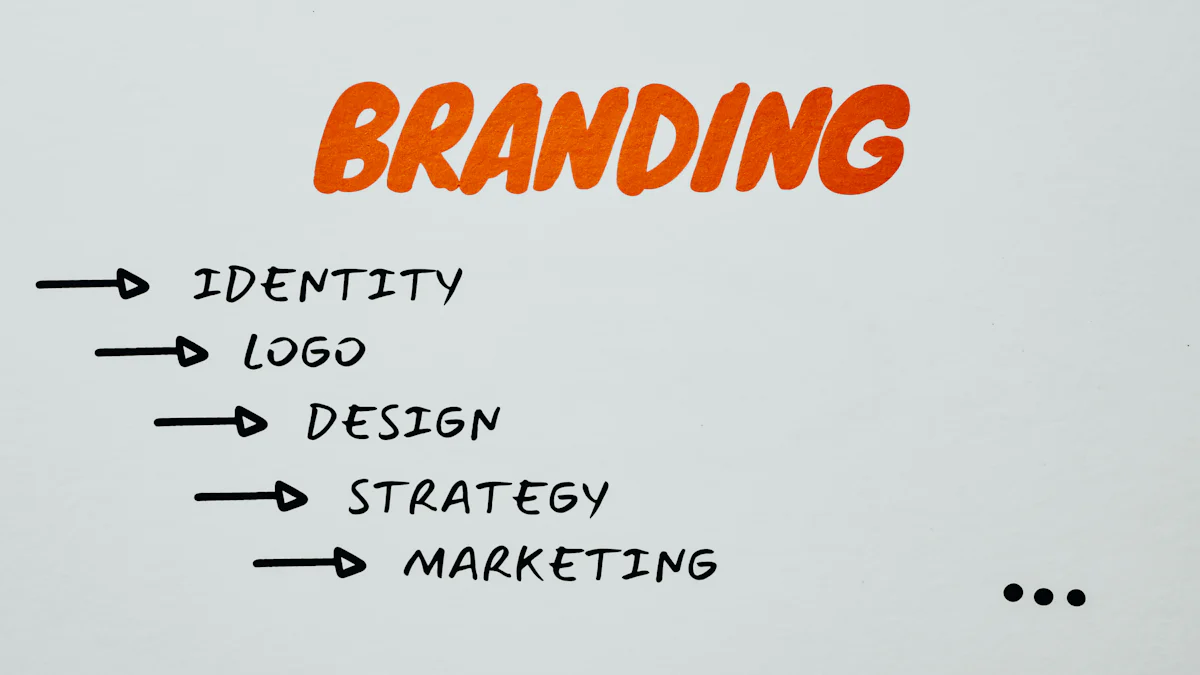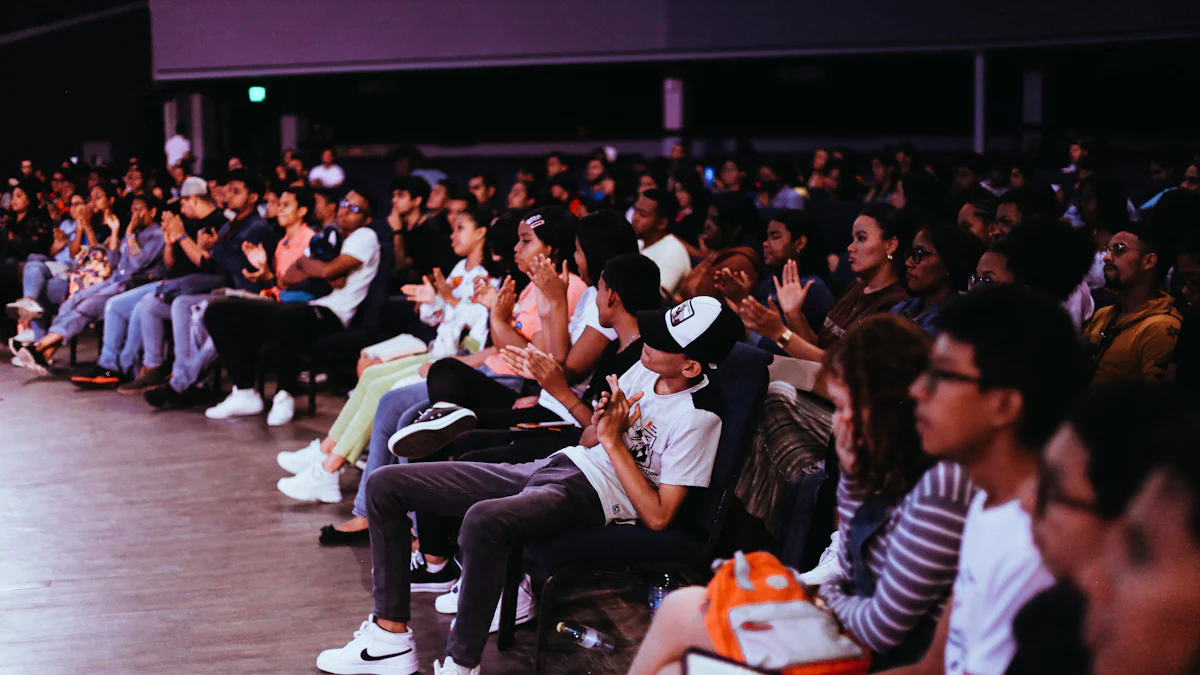Top 10 Tips to Boost Audience Engagement in 2025 Events

Imagine hosting an event where your audience feels connected, excited, and eager to participate. That’s the power of strong audience engagement. In 2025, it’s more important than ever. Over 80% of B2B marketers now consider attendee engagement a key measure of success. Why? Because engaged audiences stay longer, interact more, and leave with a lasting impression.
Personalized experiences and real-time feedback are shaping the future of events. Crowdsourced content, for example, lets attendees influence the agenda, keeping them invested. By using audience engagement examples like live polls or interactive visuals, you can keep your audience interested and make your event unforgettable.
The benefits are clear. From higher participation rates to better reviews, implementing audience engagement tips can transform your event. Whether it’s through pre-event buzz or presentation best practices, the right strategies ensure your audience stays connected from start to finish.
Before the Event: Setting the Stage for Success
Understand Your Audience
To truly engage your audience, you need to know who they are and what they care about. Start by researching their demographics and preferences. Here are some effective methods:
- Surveys: Use structured questionnaires to gather data on opinions, preferences, and demographics.
- In-Depth Interviews: Talk one-on-one with open-ended questions to explore their thoughts.
- Focus Groups: Host small group discussions to uncover shared opinions.
- Observational Research: Watch and record behaviors systematically.
- Ethnographic Studies: Immerse yourself in their environment to understand their culture and habits.
For surveys or interviews, tools like Google Forms or Typeform are great for creating engaging and user-friendly designs. If you need advanced analytics, platforms like Qualtrics or SurveyMonkey can help you dive deeper into audience insights.
Tip: The more you understand your audience, the easier it becomes to tailor your event to their needs.
Define Clear Engagement Goals
Before you plan how to interact with your audience, set clear goals. These goals should align with your event objectives and provide measurable outcomes. For example, you might aim to increase brand awareness through social media traction or boost attendance by a specific percentage.
Here are some engagement metrics to consider:
- Pre- and post-event social media engagement.
- Number of mentions, tags, and shares.
- Event registrations (new vs. returning).
- Email marketing open rates.
To measure success, track KPIs like click-through rates or website behavior metrics. Regularly analyze this data to refine your strategies.
Build Anticipation with Pre-Event Interaction
Creating buzz before your event is a surefire way to include audience engagement early. Social media teasers and event apps are excellent tools for this. For instance, you can share behind-the-scenes content, such as sneak peeks or bloopers, to build excitement.
Here are some proven strategies:
- Post engaging content like videos or polls on social media.
- Collaborate with influencers to expand your reach.
- Develop attendee personas to tailor your marketing.
Take inspiration from brands like Warby Parker, which used humorous videos to connect with their audience, or Sprout Social, which shared Instagram Reels to highlight event partnerships. These examples show how creativity can spark interest and get people talking about your event.
Note: The more you interact with your audience before the event, the more invested they’ll feel when it begins.
During the Event: Maximizing Real-Time Engagement

Start with a Memorable Opening
The first few minutes of your event set the tone for everything that follows. You need to grab attention right away. Start with a compelling story that connects emotionally with your audience. Or, share a surprising statistic that makes them sit up and take notice. You could even ask questions that spark curiosity or challenge their assumptions.
Here are some opening techniques to captivate your audience:
- Craft a bold opening statement to grab attention.
- Share a story that resonates with your audience’s experiences.
- Use visuals to set the mood and spark interest.
- Pose a challenge or present a solution to engage their minds.
Once you’ve hooked them, clearly communicate the value of your event. Greet attendees warmly and provide a quick overview of what they can expect. Use an emcee to keep the energy high and share updates throughout the event. Event apps can also send push notifications to keep everyone informed about session times or activities.
Tip: A strong opening isn’t just about impressing your audience—it’s about making them feel like they’re part of something valuable.
Incorporate Interactive Audience Engagement Examples
To keep your audience engaged, you need to get them involved. Use polls and quizzes to encourage participation. Tools like Slido or Mentimeter make it easy to run live audience polling during sessions. You can also gamify your event with challenges or scavenger hunts. For example, create a digital passport game where attendees earn points for visiting booths or completing tasks.
Here are some interactive activities to try:
- Host Q&A sessions where attendees can ask questions in real time.
- Use polls and quizzes to gather opinions or test knowledge.
- Organize team-based challenges to foster collaboration.
- Include networking sessions to help attendees connect.
Interactive activities don’t just entertain—they make your audience feel like active participants in the event.
Leverage Storytelling and Visuals
Stories have the power to connect people. Share relatable stories that align with your event’s theme. For example, a personal anecdote or a customer success story can make your message more impactful. Pair your storytelling with engaging visuals to keep your audience’s attention. Videos, infographics, and dynamic slides can simplify complex ideas and make your presentation memorable.
Research shows that visuals can evoke emotions and enhance retention. A video, for instance, can convey more information than a lengthy speech. Use tools like whiteboards for informal settings or infographics to break down data. Engaging visuals not only support your narrative but also help you get your audience active and invested in the content.
Note: Combining storytelling with visuals creates a powerful experience that resonates long after the event ends.
Adapt to Audience Feedback
Monitor reactions and adjust content delivery in real-time.
Your audience’s reactions can tell you a lot about how well your event is going. Paying attention to their feedback during the event helps you make quick adjustments to keep them engaged. For example, if you notice attendees losing interest, you can switch up your presentation style or introduce a live polling session to re-capture their attention. Tools like SurveyMonkey or Google Forms let you gather structured feedback instantly. You can also use feedback forms on your event app or website to collect thoughts as the event unfolds.
Social media platforms are another great way to monitor reactions. Keep an eye on comments, hashtags, and polls shared by attendees. These real-time insights can guide you in tweaking your content delivery. For instance, if a particular session sparks a lot of questions, you could extend the Q&A time or dive deeper into the topic.
Tip: Always stay flexible. Your ability to adapt shows your audience that their opinions matter.
Use live chat or feedback tools to stay connected.
Live chat and feedback tools are your best friends when it comes to staying connected with your audience. They make it easy for attendees to share their thoughts and ask questions without interrupting the flow of the event. Tools like Youengage and Slido are perfect for creating interactive experiences. You can use them to run live polling or crowdsource questions during sessions.
Here’s a quick comparison of some popular tools:
| Tool | Description |
|---|---|
| Youengage | A tool for creating polls and quizzes that allows audience interaction and crowdsourcing questions. |
| Slido | A polling and Q&A tool that enables audience participation through live polls and anonymous questions. |
| Everwall | Collects and curates social media conversations, displaying them on screens to enhance engagement. |
| Mentimeter | A mobile voting app that shares results in real-time, allowing audience opinions to be gathered easily. |
| Glisser | Shares slides to mobile devices, enabling attendees to comment and provide feedback on presentations. |
Using these tools keeps the conversation flowing and ensures your audience feels heard. For example, you could use Mentimeter to gather opinions during a session and display the results instantly. This not only boosts engagement but also makes your event more dynamic and interactive.
Note: Real-time feedback tools don’t just help you connect—they also make your audience feel like active participants.
After the Event: Sustaining Engagement and Building Relationships

Follow Up with Personalized Communication
Your event doesn’t end when the last session wraps up. Following up with personalized communication keeps the connection alive. Sending thank-you emails or messages is a great way to show appreciation. A thoughtful note like, “Once again, we extend our deepest thanks for your invaluable presence at [Event Name]. Your contribution made a significant impact, and we’re immensely grateful for your support,” can leave a lasting impression.
Include event highlights in your follow-up. Share recordings, key takeaways, or exclusive content to keep attendees engaged. For example, you could send a link to a video recap or a downloadable guide summarizing the event’s main points. Personalized messages make attendees feel valued and set the stage for future interactions.
Tip: Use insights from the event to tailor your follow-ups. If someone showed interest in a specific topic, send them related resources. This approach improves audience interaction and keeps your communication relevant.
Collect and Implement Feedback
Feedback is your secret weapon for improving future events. Use post-event surveys or interviews to gather honest insights. Anonymous feedback often works best, as it encourages attendees to share their true thoughts. Tools like email follow-ups or event feedback buttons make it easy for participants to provide input.
Here are some effective ways to collect feedback:
- Use comment cards for general thoughts.
- Incentivize paper surveys with small prizes.
- Try live social media updates to capture real-time reactions.
Once you’ve collected feedback, act on it. For example, Hanapin Marketing used an event app to gather speaker evaluations, which helped them attract better speakers for future events. Implementing feedback shows your audience that their opinions matter and helps you create audience engagement that lasts.
Foster a Community Around Your Event
Building a community ensures your event’s impact doesn’t fade. Create online forums or groups where attendees can continue discussions. Platforms like Facebook Groups or LinkedIn Communities work well for this. These spaces allow participants to share ideas, ask questions, and stay connected.
Regular updates keep the community active. Share resources like in-depth articles, video highlights, or interactive quizzes. Organize virtual meetups or workshops to maintain momentum. For example, you could host a follow-up webinar to dive deeper into a popular session topic.
Note: Online communities don’t just connect people—they foster a sense of belonging. They also help debunk myths and provide accurate resources, making them a valuable tool for long-term engagement.
Audience engagement is the backbone of successful events in 2025. It shapes every stage of planning, from attracting attendees to fostering active participation. By mastering engagement, you can create immersive experiences that leave lasting impressions. Preparation, real-time interaction, and thoughtful follow-ups are your secret weapons. For instance, post-event surveys with incentives or tailored offers can keep your audience connected.
When you focus on personalization and meaningful connections, you turn attendees into active participants. These strategies don’t just enhance satisfaction—they build loyalty and strengthen relationships. Start implementing these tips today to make your events unforgettable!
FAQ
What are some quick engagement ideas for my event?
Try live polls, gamification, or interactive Q&A sessions. These activities boost audience interaction and keep attendees engaged. You can also host a Q&A session to address their questions in real time. Simple engagement ideas like these can make your event more dynamic and memorable.
How do I encourage attendee engagement during a virtual event?
Use tools like Slido or Mentimeter for live polls and Q&A. Incorporate a call-to-action in your sessions, like asking attendees to share their thoughts in the chat. Virtual scavenger hunts or breakout room discussions also work well to drive event engagement.
What’s the best way to follow up after an event?
Send personalized thank-you emails with event highlights. Include a call to action, like asking attendees to join a community or complete a survey. Sharing exclusive content or recordings keeps the conversation going and strengthens attendee engagement.
How can I measure event engagement effectively?
Track metrics like social media mentions, Q&A participation, and survey responses. Use tools to monitor audience interaction during sessions. These insights help you refine your engagement ideas and improve future events.
Why is a call to action important for engagement?
A call to action motivates attendees to take specific steps, like joining a discussion or completing a poll. It drives audience interaction and ensures they stay actively involved. Clear CTAs make your event engagement strategies more effective.
See Also
15 Creative Ways To Enhance Audience Engagement In 2025
Effective Techniques For Evaluating Audience Engagement In 2025
10 Strategies To Enhance Engagement Using Zoom Tools
